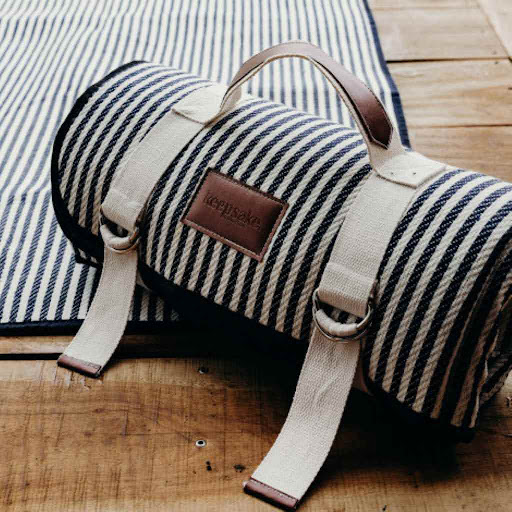In today’s competitive market, establishing a strong brand presence is crucial for business success.
Custom promotional t-shirts offer a cost-effective and versatile way to enhance brand visibility and engagement.
This article explores a step-by-step approach to effectively use custom promotional t-shirts as a powerful marketing tool.
Understanding the Power of Promotional T-Shirts
Custom promotional t-shirts go beyond mere clothing; they serve as mobile advertisements that can reach a wide audience.
Whether worn by employees, given away at events, or sold as merchandise, these shirts act as walking billboards that promote your brand wherever they go.
Benefits of Using Promotional T-Shirts
- Increased Brand Exposure: T-shirts are visible in various settings, exposing your brand to a diverse audience.
- Cost-Effective Marketing: Compared to traditional advertising methods, t-shirts offer a high return on investment.
- Brand Loyalty: Customized t-shirts can foster a sense of belonging among customers and employees alike.
- Versatility: They can be used in a variety of promotional strategies, from giveaways to event merchandise.
Using Promotional T-Shirts Effectively
Promotional t-shirts offer a powerful canvas for branding and engagement. By strategically designing and distributing them, businesses can enhance visibility, foster customer loyalty, and drive sales.
Understanding your audience, setting clear objectives, and choosing quality materials are crucial steps.
Effective distribution through events, rewards, and social media contests amplifies their impact. Monitoring metrics like brand visibility and customer engagement ensures a successful campaign, while sustainability practices can bolster brand reputation.
Ultimately, custom t-shirts serve as versatile tools for long-term brand engagement and community involvement.
Step 1: Define Your Objectives
Before diving into the design and distribution of promotional t-shirts, clarify your objectives. Ask yourself:
- Target Audience: Who are you trying to reach with these t-shirts?
- Goals: Are you aiming to increase brand awareness, drive sales, or foster customer loyalty?
- Budget: Determine how much you can allocate for designing, producing, and distributing the t-shirts.
Step 2: Designing Your T-Shirt
The design of your promotional t-shirt is critical as it represents your brand’s identity and message. Here’s how to create an effective design:
- Brand Elements: Incorporate your logo, brand colors, and tagline prominently.
- Message: Ensure the design communicates your brand’s values or a specific campaign message clearly.
- Visual Appeal: Opt for a design that is visually appealing and resonates with your target audience.
Step 3: Selecting the Right T-Shirt Quality and Style
The quality and style of the t-shirt can influence how it is perceived and how long it lasts. Consider the following factors:
- Fabric: Choose a comfortable fabric that aligns with your brand image.
- Fit: Determine whether a standard fit or a more trendy style suits your audience best.
- Sizes: Ensure a range of sizes are available to accommodate different body types.
Step 4: Printing and Production
Once the design and t-shirt style are finalized, select a reputable printing company to bring your vision to life:
- Printing Method: Decide between screen printing, digital printing, or embroidery based on your design and budget. For more versatility and vibrant colors, dtf gang sheet printing is also a great option, offering high-quality prints at a reasonable cost.
- Quality Control: Inspect samples for color accuracy and durability before approving the full production run.
- Quantity: Order enough t-shirts to meet your promotional needs without excess inventory.
Step 5: Distribution Strategy
How you distribute your promotional t-shirts can significantly impact their effectiveness. Consider these distribution channels:
- Events and Trade Shows: Give away t-shirts to attendees or use them as part of event staff uniforms.
- Customer Rewards: Offer t-shirts as rewards for loyal customers or as part of a promotional bundle.
- Social Media Contests: Use t-shirts as prizes for online contests to increase engagement.
Step 6: Measure Success and Adjust
To gauge the success of your promotional t-shirt campaign, track key metrics such as:
- Brand Visibility: Measure the reach and frequency of exposure generated by the t-shirts.
- Customer Engagement: Monitor social media mentions, website traffic, and customer feedback.
- Sales Impact: Analyze any changes in sales or inquiries attributable to the campaign.
Step 7: Sustainability Considerations
Incorporating sustainability into your promotional t-shirt strategy not only aligns with modern consumer values but also enhances brand reputation. Consider:
- Eco-Friendly Materials: Opt for organic cotton or recycled fabrics.
- Ethical Production: Choose suppliers with fair labor practices and certifications.
- End-of-Life Options: Encourage t-shirt recycling or upcycling programs.
Step 8: Long-Term Brand Engagement
Maximize the longevity of your promotional t-shirt campaign by fostering ongoing engagement with your audience:
- Seasonal Campaigns: Introduce limited-edition designs or collections tied to seasonal events.
- Community Involvement: Sponsor local events or charities using branded t-shirts.
- User-Generated Content: Encourage customers to share photos wearing your t-shirts on social media.
Conclusion
Custom promotional t-shirts are a versatile and impactful marketing tool that can elevate your brand’s visibility and engagement.
By following a structured approach—from defining objectives to designing, producing, and distributing t-shirts—you can maximize their effectiveness and achieve your marketing goals.
Embrace the power of promotional t-shirts as part of your brand-building strategy and watch as your brand gains recognition and loyalty among your target audience.

